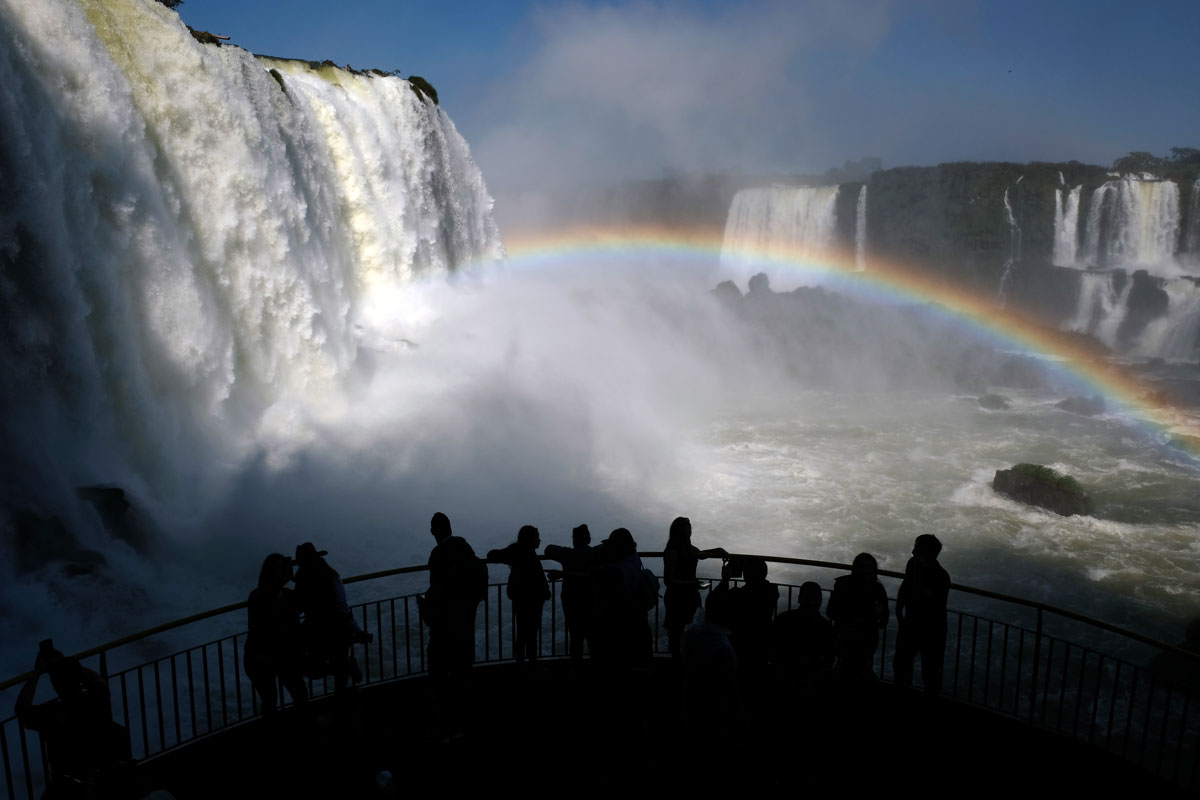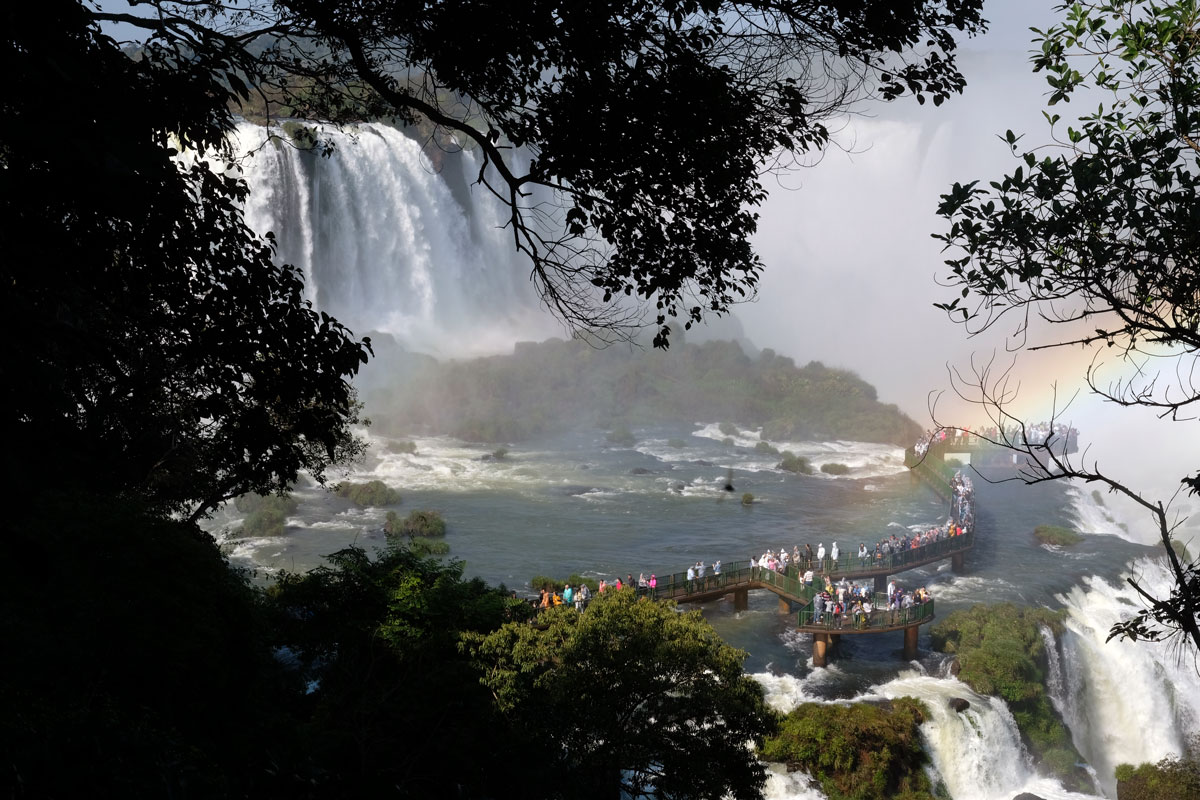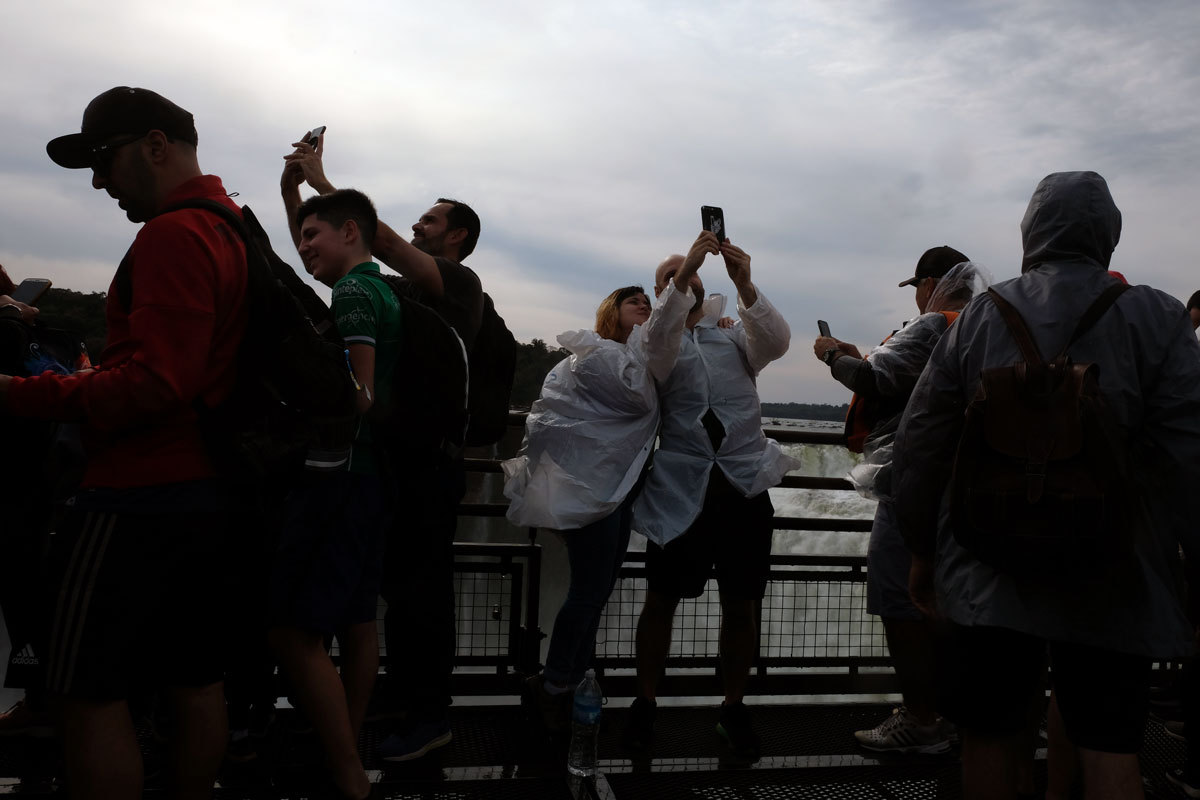Same same, but different
It is claimed that former first lady Eleanor Roosevelt said “Poor Niagara” when she first looked upon the Iguaçu Falls at the border between Argentina and Brazil. Apparently, according to other sources, she never made it to the falls. Whatever is the truth, the Iguaçu falls are simply almighty – from both sides of the border.
It is called the Devil’s Throat, this part of the Iguaçu river that cascades into the abyss together with 281 other waterfalls along the border of Brazil and Argentina. It is created as the river Iguaçu falls off the Parana plane later to meet the Parana river that in turn makes up the border with Paraguay. The falls, all 281 of them, are simply spectacular as they thunder along their way. And they have been on UNESCO’s World Heritage List since 1986. It is spelled Iguaçu in Brazil and Iguazu in Argentina.
Getting to the falls is a 45 minutes’ local bus ride from the central bus station in the Brazilian town of Foz do Iguaçu that will set you back one dollar. As you enter the gates to the National Park you are short of another 19 dollars, or 70 reals as is the price for Norwegians. Prices apparently varies with your nationality, cheapest of course for the locals. CNN says Iguazu Falls should be on every person’s bucket list of things to see. True enough, the queue to buy the ticket, then another queue for the bus to take you to the awesome sights, is proof enough that the bucket has found its way to a general crowd.
From the gates there is another fifteen minutes’ bus ride to the spectacular sight, where the announcement accompanied with bird songs ask you to refrain from smoking and littering the place – as this is a protected area. The total number of falls, the announcer says, is 281. But I’ve read that this may depend on the season. It is the number of falls that make them stand out. Together with the Niagara on the US and Canadian border, and the Victoria falls along the Zimbabwe and Zambia border they form the most visited and spectacular water falls on this planet. On everybody’s bucket list as they say. But I would add myself that when you stand just next to the falls, or Garganta do Diabo in Portuguese, the sheer volume of water that poor over the edge is a mesmerizing experience.
I got off the bus at the second stop, as most people did. From there a mile-long concrete path along the ridge overlooking the falls, takes you towards the highlight of all the views: The Devil’s Throat. You share the path with hundreds of other curious visitors, who all fight for the best spot for their selfies. Along the path you see some of the 281 falls, and as this was a sunny day with a clear sky, the view also came with rainbows – rainbows all over. During the rainy season, enough water spills over the falls every second to fill five Olympic-sized swimming pools. If you can tear yourself away from this awesome sight, there’s also a tropical rainforest with 80 different mammals and 2,000 plant species just waiting to be explored.
Basically, this is a wonderful natural attraction which according to sources on Google have been turned into a tourist milking machine. The views are great, and the rainforest is protected, but even if my visit is in the low season, I left with a feeling I had been on a theme park with long queues and inflated prices for food and drinks. However, as long as you arrive with the knowledge there are going to be queues and expensive food you will enjoy your day. The waterfall themselves are beautiful – no doubt about that.
After spending a little over half a day along the falls on the Brazilian side, the next day I was off to more wonders on the Argentinian side. If you go on your own, you’ll have to take a bus from Foz do Iguacu in Brazil to the bus station in Puerto Iguazú, Argentina, and then another bus from there to the falls, wasting a lot of time on transport. The easiest way to get to the Argentinian side was to stay put at my hotel in Foz (in Brazil) and get a taxi to take me there. It is a 45 minutes’ ride (including waiting for passport control on both sides) to the cost of around 115 reals. On this side of the falls one could take a boat trip close up to the water falls. For a mere 2,500 pesos you can get an exhilarating two and a half tour through jungle, on a boat through the rapids and a special view from inside the Garganta del Diablo’s Canyon (The Devil’s throat). But it is not for the faint hearted. There are restrictions on who will be able to participate: no pregnant women, nobody with osteoporosis or similar weak bone structure, no one with a history of heart disease or neurological disorder. And if you have chronic pulmonary disease or any sensorial disability, like poor balance, you can rule yourself out. And you will get wet, soaked straight through. All according to the brochure provided. Admission 800 pesos. MasterCard, Visa, and American Express accepted, but you must present your passport.
To fully enjoy the sights, count on around four hours on the Brazilian side, and at least a full day on the Argentinian – depending on how much you want to see. It took me four hours from arriving, taking the toy train up to the Devil’s train station and walk the 1,100 meters out to the platform from where I had a marvellous view of all the falls in the splashing water, and then back again. There are lots of walks you can do to various smaller falls, but you need time. The Argentinian side opens at 8 am, and it pays to get in early before the crowd.
Best of all, the view of the Devil’s Throat on both sides are wheel chair accessible.
In Brazil, the falls are in a protected area called the Iguaçu National Park, which opens at 9am. Even though it only takes a half day at most to see the Brazilian side, to beat the crowds you should leave Foz do Iguaçu at 8am on the number 120 bus to be sure of getting there when it opens. The falls are located on the border between Argentina and Brazil, but the best views are from Brazil according to some tourist guides. Are they? I don’t know, it was more like same same, but different.
[July 2019]



